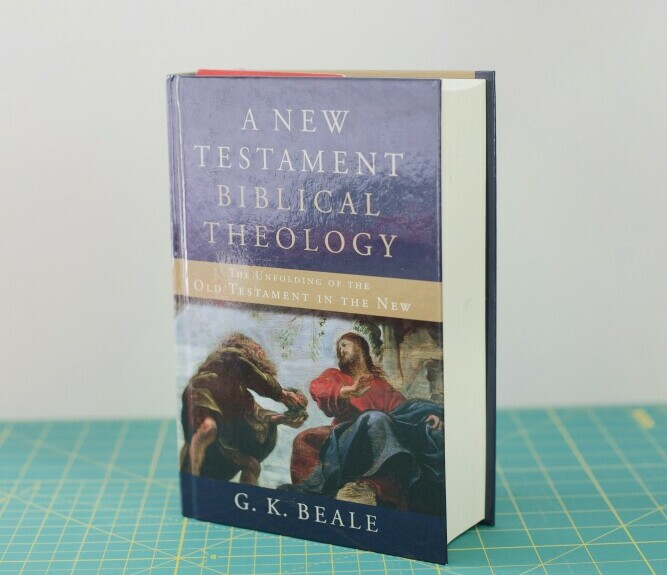The New Testament Survey: An Overview
The New Testament is a really important book for Christians. It has a lot of different types of writing and stories that help us understand our faith better.
In this part of our Bible Study Series on The New Testament Survey, we dive into the roots, importance, and influence of the New Testament on Christianity and Western culture. We examine how it was put together, its structure, and the lasting impact it has had, highlighting its timeless themes of faith, hope, and love.
Let us journey together into the origins of the New Testament, where we will explore how this sacred text came to be.
 (Image: Taylor Flowe | unsplash)
(Image: Taylor Flowe | unsplash)
The texts within the New Testament didn’t just appear overnight; they were born out of a rich cultural and historical setting, stretching back over two millennia. The New Testament, as we know it, is a collection that underwent a discerning canonization process, where early church leaders carefully chose the books for their theological significance and authenticity.
But this isn’t just about ancient texts; it’s also about how these writings continue to influence countless individuals’ faith and shape Christianity. The New Testament, at its core, encapsulates;
- the Christian message of redemption,
- the life and teachings of Jesus Christ, and
- lays the foundation for Christian moral and spiritual conduct.
I believe that to truly grasp the significance of the New Testament, we need to look beyond its historical context and recognize its continuous influence on believers today. It serves as a bridge linking the teachings of Jesus from the past to the faith communities of today, providing timeless wisdom and guidance that remain relevant across generations.
Before we get into the nitty-gritty of each book and its themes, let’s take a step back and examine the foundation on which the New Testament is constructed. Let’s unravel the intricate structure of the New Testament, uncovering the strong pillars that uphold its lasting impact.
 (Image: Mick Haupt | unsplash)
(Image: Mick Haupt | unsplash)
The Pillars of the New Testament
Now, let’s take a closer look inside to discover the key elements of the New Testament. At its core, the New Testament is structured into four main sections, each of which holds a special place in Christian teachings.
These are the;
- Gospels,
- Acts,
- Epistles, and
- Revelation.
This structured method isn’t just about staying organized; it mirrors how the early Christian Church developed and captures the fundamental teachings of Christian beliefs.
Gospels
The Gospels consist of Matthew, Mark, Luke, and John.
They’re not just ancient biographies of Jesus; they’re the foundation of Christian belief, presenting the life, teachings, death, and resurrection of Jesus Christ. Each Gospel provides a unique viewpoint, yet together, they tell a story that has been loved by believers for thousands of years.
Acts
Following the Gospels is the book of Acts, a riveting narrative that charts the early Church’s explosive growth. It’s not your average history book. Think of it as a series of adventures and trials, highlighting the apostles’ journeys as they spread the teachings of Jesus.
Epistles
Then come the Epistles, letters written by key figures such as Paul, Peter, John, and others. These aren’t just personal letters; they’re theological treasure troves, conveying teachings and guidance for both specific and general Christian communities. Through the Epistles, we gain insight into the diverse challenges and inquiries faced by early Christians..
Revelation
The final part is the Book of Revelation, a text that has fascinated and perplexed readers for centuries. It’s a cosmic narrative full of symbols and prophetic visions about the end times. Revelation is a story of hope, judgment, and the ultimate triumph of good over evil, essential for understanding the eschatological views within Christianity.
 (Image: Stephen Radfordunsplash
(Image: Stephen Radfordunsplash
Reflecting on the Legacy – The New Testament’s Enduring Impact
We have explored the detailed story of the New Testament, learning about its parts and important texts that have influenced Christianity for thousands of years. Consider for a moment the sheer influence of these ancient narratives, teachings, and prophecies on our modern world.
The Gospels, Acts, Epistles, and Revelation have shaped people’s values and influenced Western culture. The teachings and stories in these texts have impacted governments, laws, and schools, showing that the New Testament goes beyond just religion.
In contemplating the role of the New Testament, we recognize its power in molding Christian beliefs, ethics, and practices. It continues to serve as a guide, comforter, and source of strength for countless believers, transcending time and space with messages of faith, hope, and love.
As our exploration concludes, I hope you grasp not only the historical and cultural significance of the New Testament but also its living presence in the daily lives of many. Whether you’re a scholar, a seeker, or simply curious, the New Testament invites reflection and offers insights that are as relevant today as they were two thousand years ago.
In This Series
An Overview Of The New Testament
The Historical Background Of The NT
Key Themes In The NT
The Gospel Of Matthew – Taking A Closer Look
Exploring The Gospel Of Mark
The Unique Features Of The Gospel Of Luke
The Theology Of The Gospel Of John
Understanding The Acts Of The Apostles
Paul – His Life, Ministry, And Epistles
Understanding The Book Of Revelation




